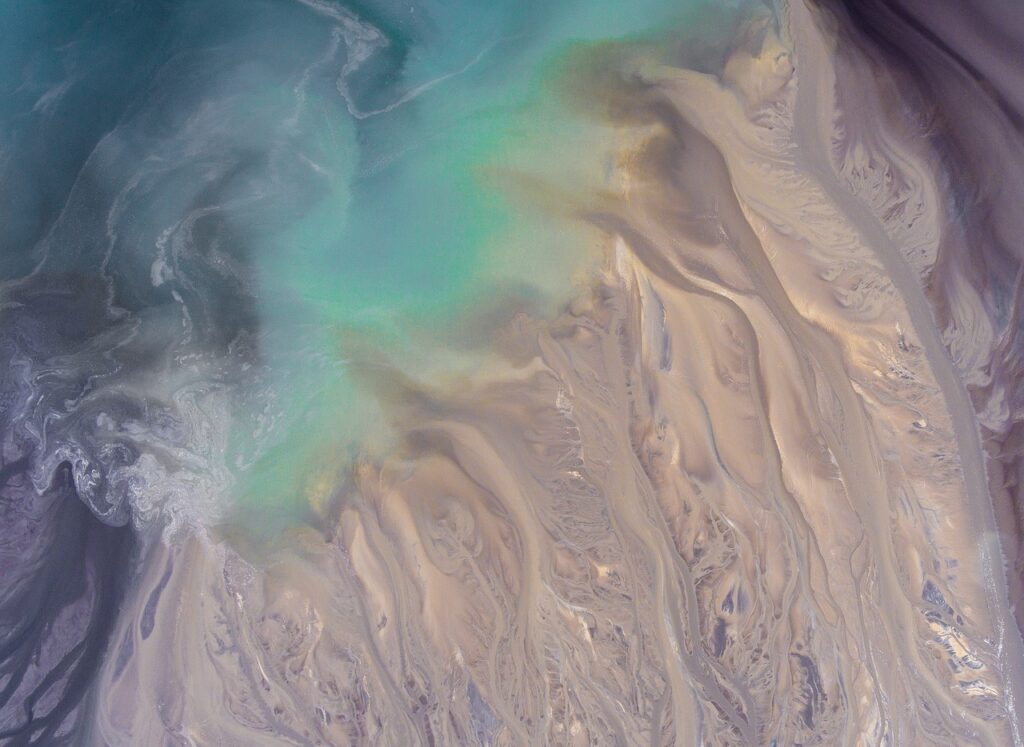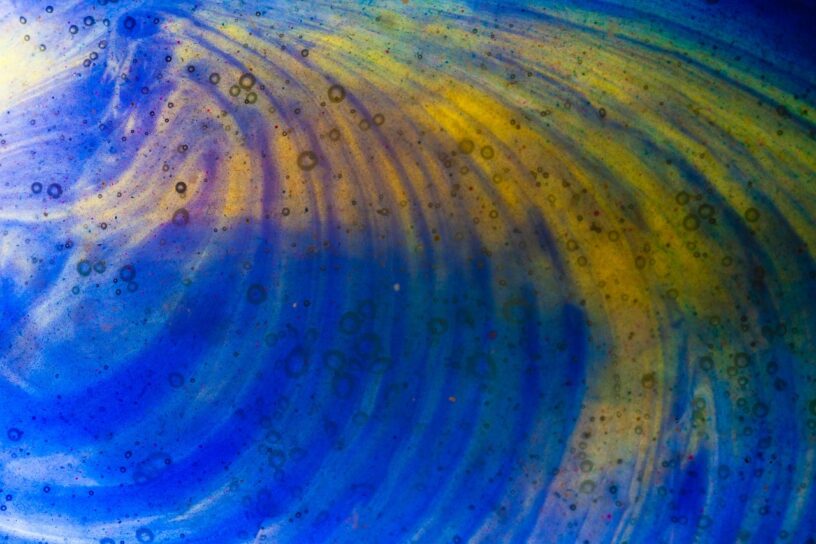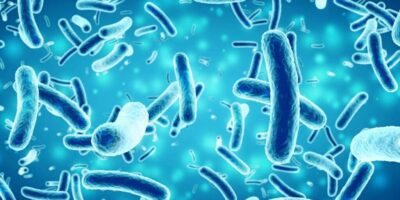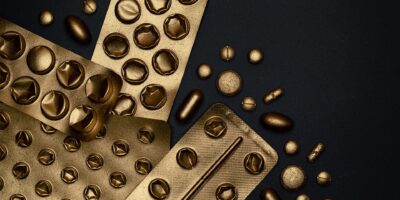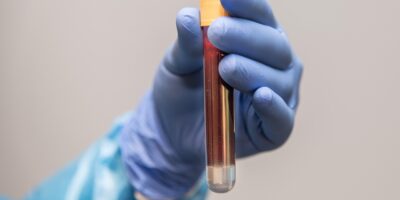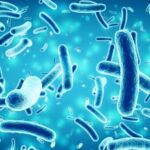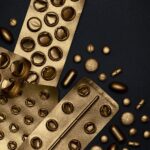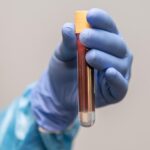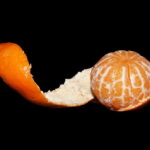Water pollution from textile waste threatens public and environmental health.
Industrial waste pollution has long been a serious issue concerning environmental and human health. Many chemicals are ejected into water sources that are reused for human consumption. Among these, Methylene Blue (MB) is a dye that is abundant in textile wastewater and toxic at high doses. As of now, we are still lacking efficient and ecological methods for chemical removal.
MoS2 nanoparticles are a possible solution but require good surfactants to make.
Recently, researchers have used TiO2 and ZnO nanoparticles together with UV light to catalyze the degradation of toxic chemicals. However, since UV is harmful to humans, alternatives using visible light are being explored.
Molybdenum disulphide (MoS2) is a metal chalcogenide that is known for its properties as a self-lubricating semiconductor, that can absorb light and photodegrade dye. It is also shown to be safe for use in humans and used for drug delivery and diagnostics. However, MoS2 exists in bulk form, and must be made into nanoparticles to be effective for degradation. Usually, this requires the use of other compound(s). Unfortunately, the current available processes involve toxic chemicals and unfavourable side reactions.
A new study introduces a gum arabic (GA) made from the sap of acacia trees as potential solution. Gum arabic is already used in food products as an emulsifier and thickener as it is easily dissolved in water. In the context of creating nanoparticles, the gum arabic acts as a biodegradable surfactant. This helps stabilize the MoS2 as it is broken down into small nanoparticles (NPs) and increases the nanoparticles’ ability to break down MB dye.
Synthesizing MoS2 nanoparticles using gum arabic.
MoS2 nanoparticles are able to degrade dye molecules by providing a surface for the MB to bind to. Photons from the sun are absorbed by the semiconductor properties of MoS2 nanoparticles. The energy of the photon excites the electrons in the MoS2 molecules, moving them to a higher energy level (known as a band). This activity leaves a hole in the original band (the valence band) that nearby molecules in solution can interact with to form volatile free radicals. These radicals then go on to interact with the structure of the MB dye molecules, breaking down the intramolecular bonds and releasing byproducts such as CO2 and water.
The first part of this study was conducted to determine the most effective concentration of gum arabic and MoS2 in water. Varying masses of GA and MoS2 were mixed and observed for signs of exfoliation, such as a colour change. Exfoliation in the context of forming nanoparticles refers to the act of separating a substance into layers with higher surface area for efficient reactions. This process is induced with the use of sonication (high frequency waves) and microwaves to break bonds and separate the bulk material. It was found that a concentration of 2 g of GA and 100 mg of bulk MoS2 per 100 mL of water produced optimal exfoliation of the MoS2. Visible light spectroscopy helped determine the best solution by observing absorbance peaks.
Once an effective concentration was established, other control variables must be established for subsequent experimentation. The variables tested were the concentration of MoS2, duration and level of sunlight exposure, and pH levels. Although working in a basic environment increased the efficacy of exfoliation, a neutral pH of 7 was almost as effective and was chosen to lessen impact on biological and environmental systems.
Efficacy of MoS2 nanoparticles at degrading dye.
The result of these tests was a solution of nanoparticles that could be used to treat MB and measure the degradation magnitude/extent and rate. It was found that when the MoS2 NP-treated MB solution was exposed to sunlight for 8 hours, the dye was degraded by 98%, which is more than precursor nanoparticles.
Tests for safety, efficacy, and efficiency.
Having established a functional degradation process, the reaction is tested for its safety in biological systems, efficacy in real-world applications, and other properties.
When the NPs were washed with ethanol and dried, the mass of MoS2 in solution and photocatalytic activity decreased steadily until the fourth reuse, where no more significant degradation was recorded. Next, a free radical trapping experiment used other compounds (Chloroform and DMSO) to scavenge (react with) free radicals in solution to determine which, if any, were influential to the degradation reaction. The main contributor was found to be superoxide, followed by hydroxyl ions.
The NPs were tested for efficacy on real wastewater sourced from textile industrial effluent. A notable change in colour confirmed the successful degradation of the dye in the water samples.
Testing on pathogenic (E. coli and S. aureus) bacterial cultures showed antimicrobial effects similar to streptomycin in inhibiting growth. Contrarily, when the NP solution was tested with a common human gut bacteria (L. delbrueckii), it did not interfere with growth, while the presence of methylene blue did. The particles’ biocompatibility was further tested when mixed with red blood cells from a healthy human donor. At high doses, hemolysis was observed after 24 hours, but none at a safe dose. These results demonstrate possible antibacterial properties while also being non-toxic to human health. However, more thorough testing should be conducted as these results are for a novel formulation.
Finally, it was established that the MoS2 NPs had a radical scavenging ability similar to ascorbic acid (vitamin C) to neutralize DPPH, a reactive free radical. This means the NPs have good antioxidant activity.
Future for green, sustainable cleanup of wastewater.
The goal of this study was to create a more sustainable, biodegradable, and rapid way to exfoliate MoS2 that results in efficient absorption of MB that will be safe in humans. The resulting gum arabic-synthesized nanoparticles succeeded at degrading methylene blue by 98%, more than any current treatments. Considering the relatively small concentration needed to be effective, this may be viable for large scale cleanups of our dwindling water sources. Additionally, the antibacterial and antioxidant properties may benefit medicinal applications. While we hope for a future with less waste production, these biological solutions like gum arabic can greatly improve our capacity to clean up our current resources.
Source: https://link.springer.com/article/10.1007/s11356-023-30116-4
